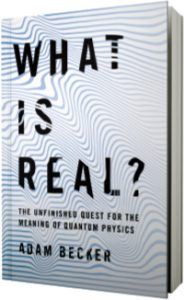Sheldon Lee Glashow in Inference Review:
 IN THE ANNUS MIRABILIS of 1905, Albert Einstein made several seminal contributions to science. Among them were the special theory of relativity and the recognition of the wave-particle duality of light—the latter a characteristic of the quantum theory soon to emerge. Modern physics rests on quantum mechanics and relativity. Both revert to classical physics under everyday circumstances: quantum mechanics for things sufficiently large; special relativity for things sufficiently slow. Within their domains, both theories have consequences that seem crazy, counterintuitive, and contrary to experience. For decades I have striven to convey the delights of modern physics to science-averse undergraduates, but many of them persist in rejecting the concepts as either unacceptable or unbelievable.
IN THE ANNUS MIRABILIS of 1905, Albert Einstein made several seminal contributions to science. Among them were the special theory of relativity and the recognition of the wave-particle duality of light—the latter a characteristic of the quantum theory soon to emerge. Modern physics rests on quantum mechanics and relativity. Both revert to classical physics under everyday circumstances: quantum mechanics for things sufficiently large; special relativity for things sufficiently slow. Within their domains, both theories have consequences that seem crazy, counterintuitive, and contrary to experience. For decades I have striven to convey the delights of modern physics to science-averse undergraduates, but many of them persist in rejecting the concepts as either unacceptable or unbelievable.
Antoine Lavoisier and James Prescott Joule were wrong! Relativity revealed energy and mass to be interconvertible, satisfying a single, unified conservation law. Who could believe that simultaneity is relative, or that no missile nor missive can travel faster than light? A clock in motion, said Einstein, ticks more slowly than an identical clock at rest. Relativistic time dilation is ordinarily negligible, except to science fiction writers, philosophers, and physicists who study rapidly moving particles.
What Is Real? is a book focusing on the counterintuitive nature of quantum theory, the difficulties in its interpretation, and the various doomed attempts to introduce hidden variables into its structure. I found it distasteful to find a trained astrophysicist invoking a conspiracy by physicists and physics teachers to foist the Copenhagen interpretation upon naive students of quantum mechanics.
More here.
